When you’re considering getting eyelash extensions, it’s essential to do a patch test first. Patch tests are an important part of any beauty treatment or aesthetic procedure, and they can help to reduce the risk of adverse reactions to your eyelash extensions. A patch test helps you determine if you are allergic or sensitive to the adhesive used in the application of the eyelash extensions.
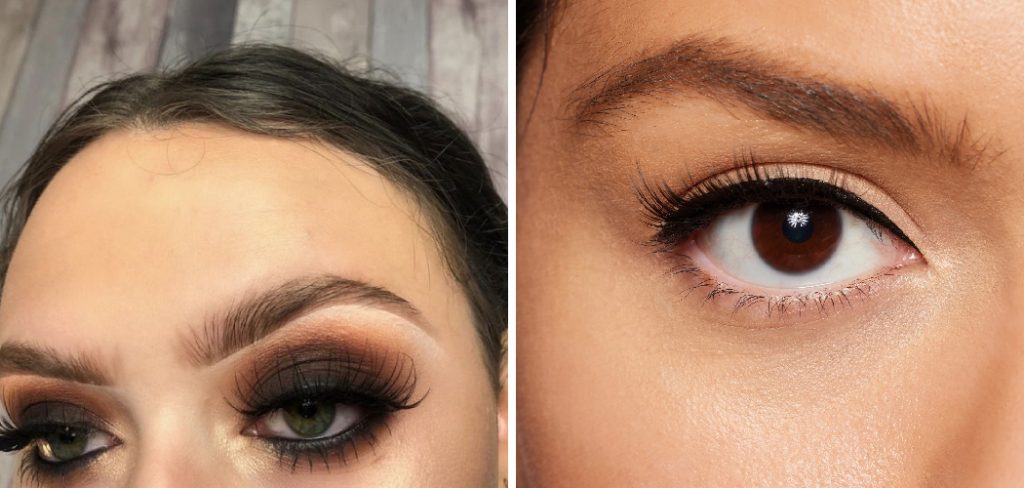
When it comes to getting eyelash extensions, one of the main advantages is that they can help enhance your natural beauty while still looking very natural. With that said, it is important to be sure you are not allergic to any of the products being used in the application process. That’s why performing a patch test prior to receiving eyelash extensions is so important. You can find step-by-step instructions on how to do a patch test for eyelash extensions in this blog article.
Step-by-step Instructions for How to Do a Patch Test for Eyelash Extensions
Step 1: Inspect the Eyelash Extensions
Before applying any type of eyelash extensions, it is important to inspect the materials. Make sure that the individual fibers are free from any sort of debris or dust. To check whether an allergic reaction may occur after applying the eyelash extensions, perform a small skin test on your arm or behind your ear using only a few fibers.
Step 2: Avoid Applying the Extensions to Your Eyes
As part of the patch test, you should not apply any extensions to your eyes, even if it is just a few fibers. The skin around your eyes is much more sensitive than other parts of your body which makes it easier for allergies and reactions to occur.
Step 3: Cleanse Your Skin
Before applying any eyelash extensions, make sure to cleanse your skin with a gentle cleanser. This is important for removing any oils and dirt that could prevent the fibers from adhering properly. After applying a few fibers to your arm or behind your ear using an adhesive, leave it on overnight so that you can see how your skin reacts.
Step 4: Avoid Washing the Area
Do not wash the area where you applied the patch test with any type of cleanser or make-up remover for at least 24 hours. After 24 hours, carefully remove the fibers and inspect the area to see if there has been any reaction. Over the next few days, monitor the area for any signs of an allergic reaction such as redness, itching, or swelling.
Step 5: Consult a Professional if Needed
If you experience any reactions from the patch test, stop using eyelash extensions and consult a professional. If you do not experience any reactions from the patch test, it is safe to use eyelash extensions. However, it is still recommended to re-test periodically to ensure that your skin has not become more sensitive over time.
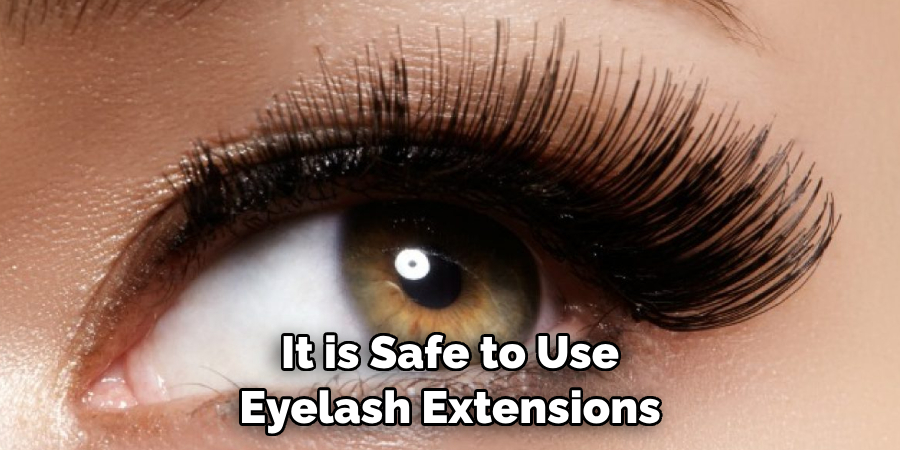
It is important to note that even if there are no adverse reactions during a patch test, you may still experience a reaction when using eyelash extensions. Therefore, it is important to be aware of the signs and symptoms of an allergic reaction so that you can seek medical attention if necessary.
Tips for How to Do a Patch Test for Eyelash Extensions
- Do a patch test before every full set of eyelash extensions. This will help to prevent an allergic reaction or irritation due to the adhesive used in eyelash extensions.
- Make sure you are using an adhesive that is safe for your eyes and skin type, and follow the manufacturer’s instructions on how to perform a patch test.
- Perform the patch test at least 24 hours before your appointment to ensure that you have enough time to monitor for any reactions.
- Always apply a few fibers of the eyelash extensions to an area on your body (such as your arm or behind your ear) and leave it on for at least 24 hours before removing it.
- Avoid using other products on the area for at least 24 hours after applying the patch test.
- Monitor the area closely over the next few days and pay attention to any signs of an allergic reaction such as redness, itching, or swelling.
- If you experience any reactions during a patch test, stop using eyelash extensions and consult a professional.
It is important to remember that even if there are no adverse reactions during a patch test, you may still experience a reaction when using eyelash extensions. Therefore, it is important to take all necessary precautions and be aware of the signs and symptoms of an allergic reaction so that you can seek medical attention if needed.
Is There Any Special Technique You Should Use When Applying and/or Removing the Patch Test?
When applying the patch test, it’s important to take care not to tug or pull on your eyelashes. Doing so can lead to discomfort and irritation. Gently press the test strip onto your skin near the base of your upper eyelid, making sure all of the strips have good contact with your skin.
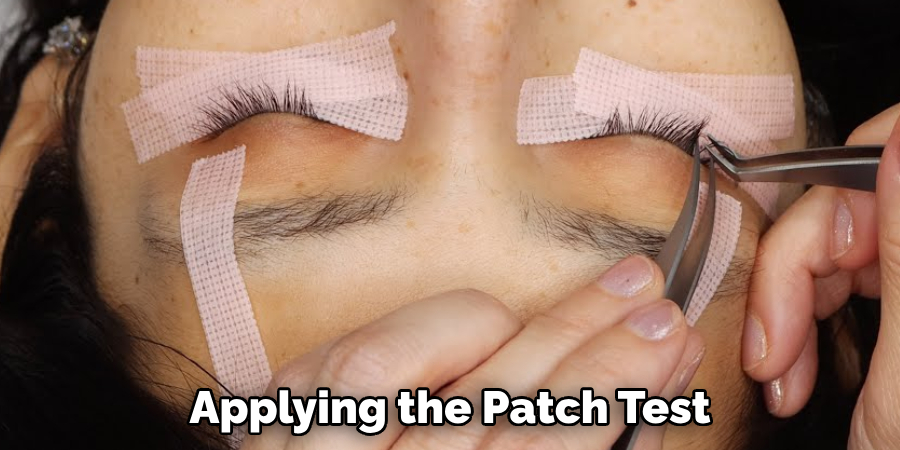
When you’re ready to remove them, use a cotton swab soaked in oil-free makeup remover and gently pull the strip away from your skin. It’s also important to remember to wash your hands before and after applying and removing any patch test fibers. Finally, make sure you don’t apply too much adhesive or pressure when applying the patch test, as this may cause irritation or discomfort.
How Long Will It Take for the Results of the Patch Test to Be Visible?
The results of a patch test for eyelash extensions should become visible within 48 hours. If any irritation or swelling is noticeable after this time, you should immediately remove the lash extensions and consult with an expert in order to determine if they are suitable for your particular skin type. In some cases, it may be necessary to switch to a different brand or style of eyelash extensions.
It is important to note that the patch test should never be done on the lids or around the eyes, as this will cause irritation and swelling. It is best to perform the patch test on an inconspicuous area of skin such as behind the ears or in a fold of skin near your neck. This will ensure that any potential reaction can be monitored without any visible signs.
If a reaction does occur, it is important to remove the lash extensions and thoroughly cleanse the area with a mild soap and water. Applying a cool compress may also help reduce inflammation and discomfort. If symptoms persist after 48 hours, medical attention should be sought in order to determine the best course of action for your particular situation.
Are There Any Potential Allergies That Could Occur From Doing a Patch Test for Eyelash Extensions?
Yes, it is possible for someone to experience an allergic reaction while conducting a patch test for eyelash extensions. Symptoms of an allergy can include itching, burning, redness, swelling, or irritation at the site of the patch test. If any of these symptoms occur after doing a patch test for eyelash extensions, it is important to seek medical advice right away. It is also important to take extra precautions when applying eyelash extensions, such as using a clean lash brush and avoiding direct contact with the eyes.
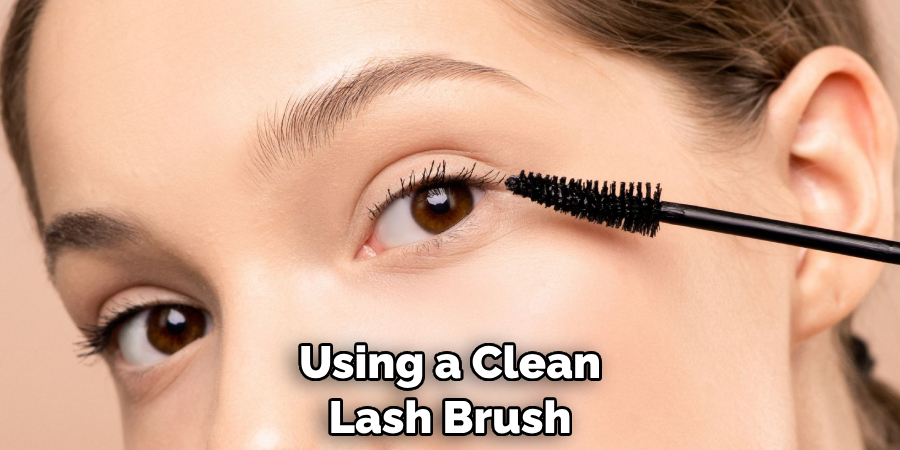
By taking these steps, it can help reduce the risk of allergies or any other adverse reactions from occurring. Additionally, it is wise to consult with a professional before attempting to do eyelash extensions on yourself. They will be able to provide you with the best advice and guidance on patching test for eyelash extensions safely, and what steps to take if any allergic reactions occur.
Are There Any Risks Associated With Performing a Patch Test for Eyelash Extensions?
Yes, there are some risks associated with performing a patch test for eyelash extensions. The most common risk is an allergic reaction to the adhesive or other ingredients in the eyelash extension product. If you experience any redness, swelling, irritation, or itching after applying a patch test to your skin or lashes, it’s important to discontinue use immediately and consult with a doctor if needed.
Additionally, it’s important to avoid applying the patch test too close to your eye area as this can cause irritation or other serious side effects. It’s also important to use a new and clean applicator each time. Using an old, contaminated applicator can lead to infection or cross-contamination. Finally, be sure to follow all instructions on the product packaging, and perform a patch test on your skin before applying the extensions to your eyes.
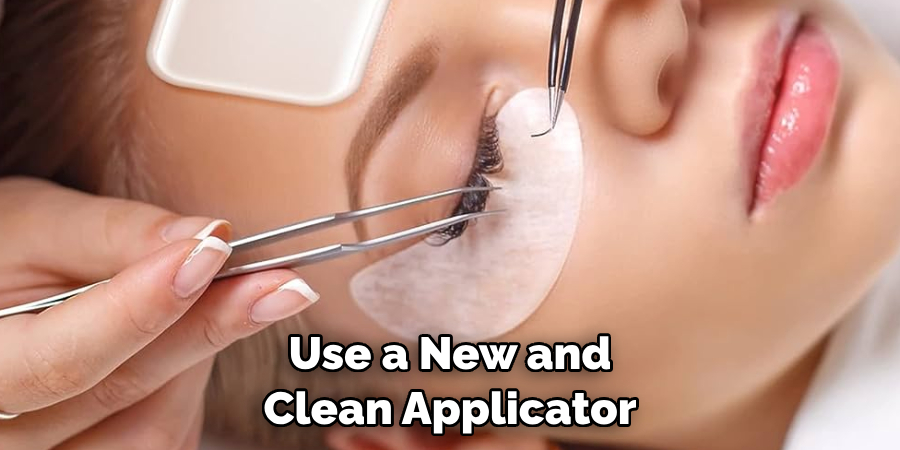
Conclusion
In conclusion, a patch test is essential to ensure that eyelash extensions will not cause any irritation or discomfort. It’s important to speak with your lash artist and get the necessary advice on what products to use for the patch test. By understanding the type of adhesive and other materials used, you’ll be able to determine which ingredients your skin may be sensitive or allergic too.
And of course, don’t forget to keep an eye out for any signs of irritation or reaction after you’ve applied the patch test. I hope this article has been beneficial for learning how to do a patch test for eyelash extensions. Make Sure the precautionary measures are followed chronologically.
About the Author
Jane Hubbard is a passionate beauty expert with a wealth of experience in makeup, hair, and overall beauty techniques. After years of working as a hairdresser specialist, she followed her entrepreneurial spirit and started her own consultancy business.
Jane has always been driven by her desire to help others feel confident in their own skin, and she does this by sharing her knowledge, experiences, and practical beauty tips. Through her consultancy, she empowers individuals to embrace their unique beauty, offering tailored guidance that boosts both self-esteem and personal style.
Professional Focus
- Specializes in makeup, hairstyling, and beauty consulting.
- Provides personalized beauty advice, tips, and techniques to help individuals feel confident in their appearance.
- Dedicated to staying up-to-date with the latest industry trends and developments.
- Passionate about creating a comfortable and empowering experience for every client.
Education History
- University of Craft and Design – Bachelor of Fine Arts (BFA) in Woodworking and Furniture Design
- Woodworking Apprenticeships – Extensive hands-on training with skilled craftsmen to refine carpentry and furniture making techniques
- Online Courses & Masterclasses – Continued education in advanced woodworking techniques, design principles, and specialized tools
Expertise:
- Makeup artistry, hairstyling, and beauty consulting.
- Personalized beauty techniques to enhance confidence and self-expression.
- Educating clients on how to maintain their beauty routines at home.
